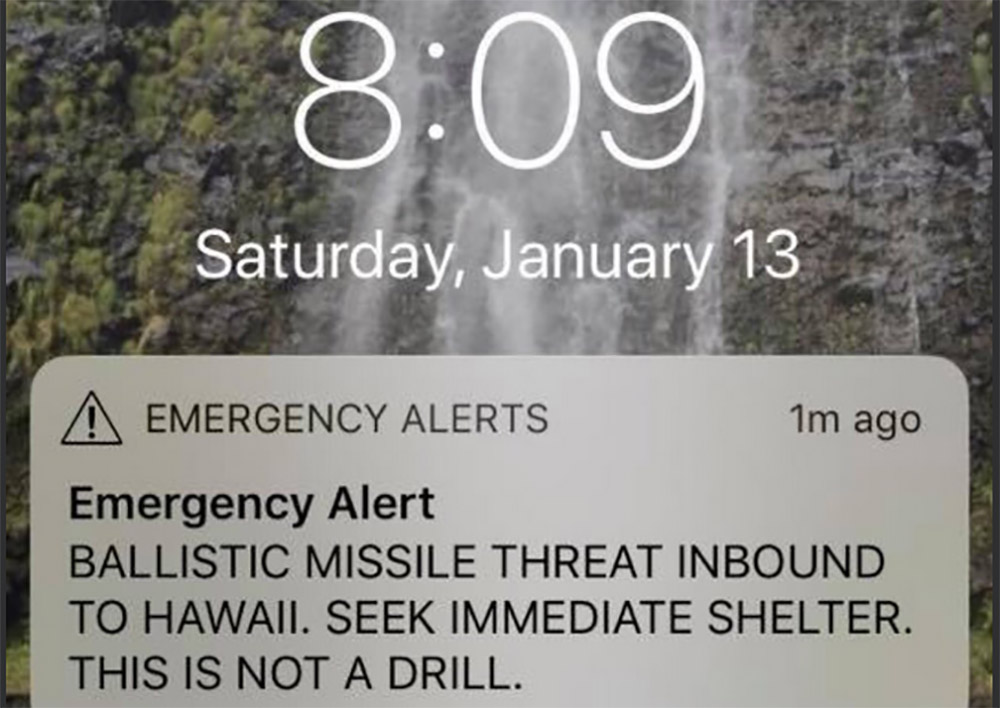“Ballistic missile threat inbound to Calgary. Seek immediate shelter. This is not a drill.”

Would you know what to do if this message popped up on your phone on an early Saturday morning? I wouldn’t.
From the looks of what happened in Hawaii over the weekend, no one else does either.
So, I asked someone who does know. Allan Bonner is a crisis manager and the author of Safer Cities of the Future, a book he wrote in 2015 after a 10-year study reading the emergency management plans of more than 100 municipalities.
LISTEN: How do you prepare for a disaster?
On the issue of a ballistic missile, in particular, his best advice is to shelter in place away from any windows. If an attack is real, exposure to radiation is the thing you want to avoid and getting into your car out in the open is the last thing you’d want to do.
Now, a ballistic missile threat may be a far-fetched risk for most communities, but disasters aren’t unusual and most cities are woefully unprepared for the worst.
Bonner’s review of emergency plans was shocking. He found cases where the policies and plans may cause more deaths than the emergency.
Some are so old they violate the law. There are references to resource documents that don’t exist. Some plans are so complex they are indecipherable. Most rely on evacuation by car even though up to half of city dwellers don’t even have cars and, even if you did try to evacuate, most cities would take 50 hours to get everyone out and you’d face nothing but gridlock.
Watch: Danielle Smith says the incident in Hawaii has shown us that people are “woefully unprepared” for a ballistic missile attack.

Yet we all face potential emergencies we have to be prepared for.
Nearly every community could face the threat of a natural disaster; whether it is a flood, fire, earthquake, tornado, mudslide, hurricane, ice storm or something else.
Bonner’s next book is how to respond in the face of a disabling cyberattack – which is also not as far-fetched as you might think; particularly after the 2015 attack on Ukraine’s electricity substations which left 230,000 people without power.
Bonner offered two pieces of good advice. The first is YOYO – You’re On Your Own (at least for the first 72 hours). Aside from frontline first responders, the state of most government bureaucracies is such that they aren’t going to be of much help to you in the first few days after a crisis hits.
You need to be prepared to take care of yourself.
WATCH BELOW: Was the false Hawaii missile alert a simple mistake and an epic failure in leadership?

The second piece of advice is that someone needs to hire a summer student to put together a standardized citizen’s guide of best practices and make sure it is widely disseminated to all municipalities and the public.
There are three elements to a good emergency plan:
- You need a go bag to throw into the car in the event you need to evacuate.
- You need a “shelter in place” plan to keep yourself sustained at home for at least three days and as long as 14 days (depending on particular threat).
- You need a “take to work” bag so you have what you need to survive in the event the crisis hits while you are at work.
How many people are prepared for each of these possibilities? Estimates are as few as seven per cent of us.
The person responsible for the false alarm in Hawaii has reportedly been reassigned and will be retrained. Rather than disciplining him for scaring people, maybe we should be thanking him for reminding us that we have our own work to do.






Comments